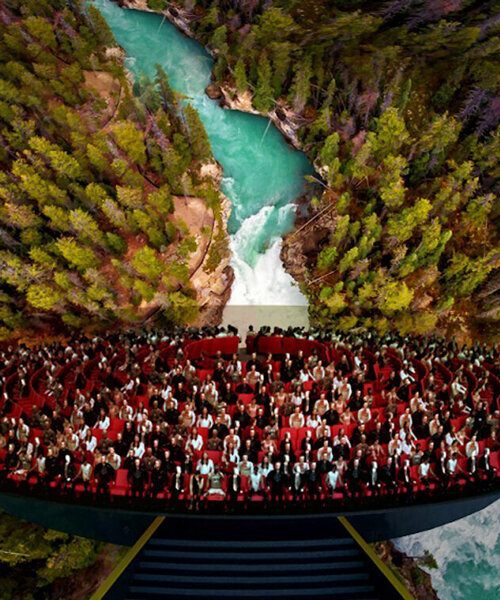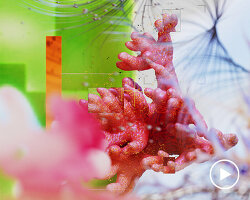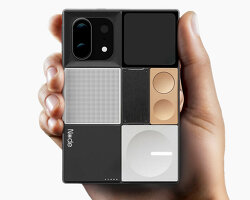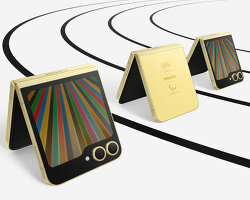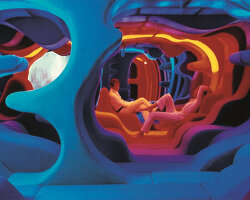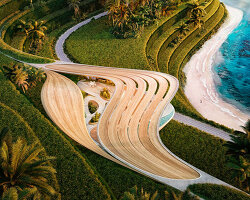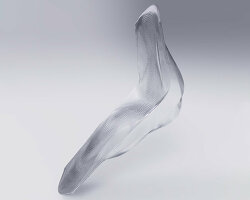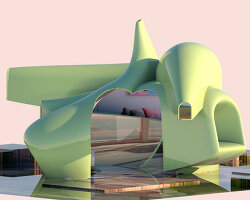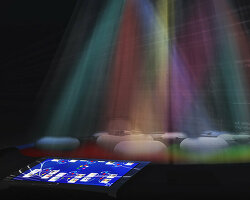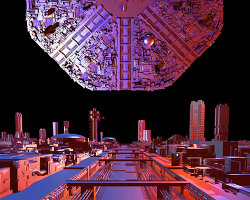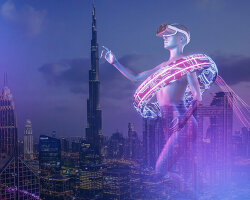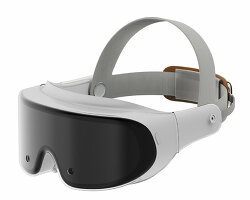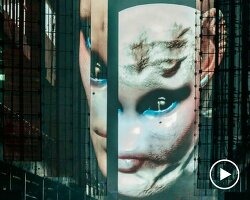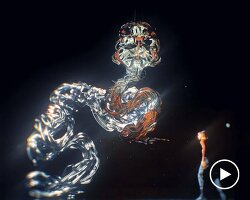architecting the next generation of the virtual realm
No longer science fiction or a fragmentary envisioned concept, the Metaverse is here and being built as we speak. Dubbed the next generation of the web, this immersive extension of our physical reality has already begun transforming the human experience. Today, digital experiences have drastically evolved with advances in cutting-edge technologies such as blockchain, 3D modeling, artificial intelligence, AR, and VR. Together, they have revolutionized how we design, work, learn, play, and interact. Particularly, the merging of physical and virtual worlds has unlocked boundless opportunities for architects and designers shaping the Metaverse.
While this alternate reality has already established a strong foothold in the digital world, uncertainty around its nuances still pervades development. In an iterative process, its parameters are still being defined, its limitations still being resolved, and its future still being innovated. As media partners of Dubai’s MetaWeek summit held in September 2022, designboom attended the two-day conference to learn more about the future of the enigmatic digital realm from some of the most prominent global experts and industry pioneers at the forefront of Metaverse development.
On that occasion, we sat down with Pico Velasquez — keynote speaker at the conference, prolific architect, computational designer, and founder of Metaverse startup VIIRA — to get a deeper insight. We discussed the role architects and designers could play in its shaping, the integration of human-centric design in virtual worldbuilding, its limitations, underlying technologies, and more. Read our conversation in full below.
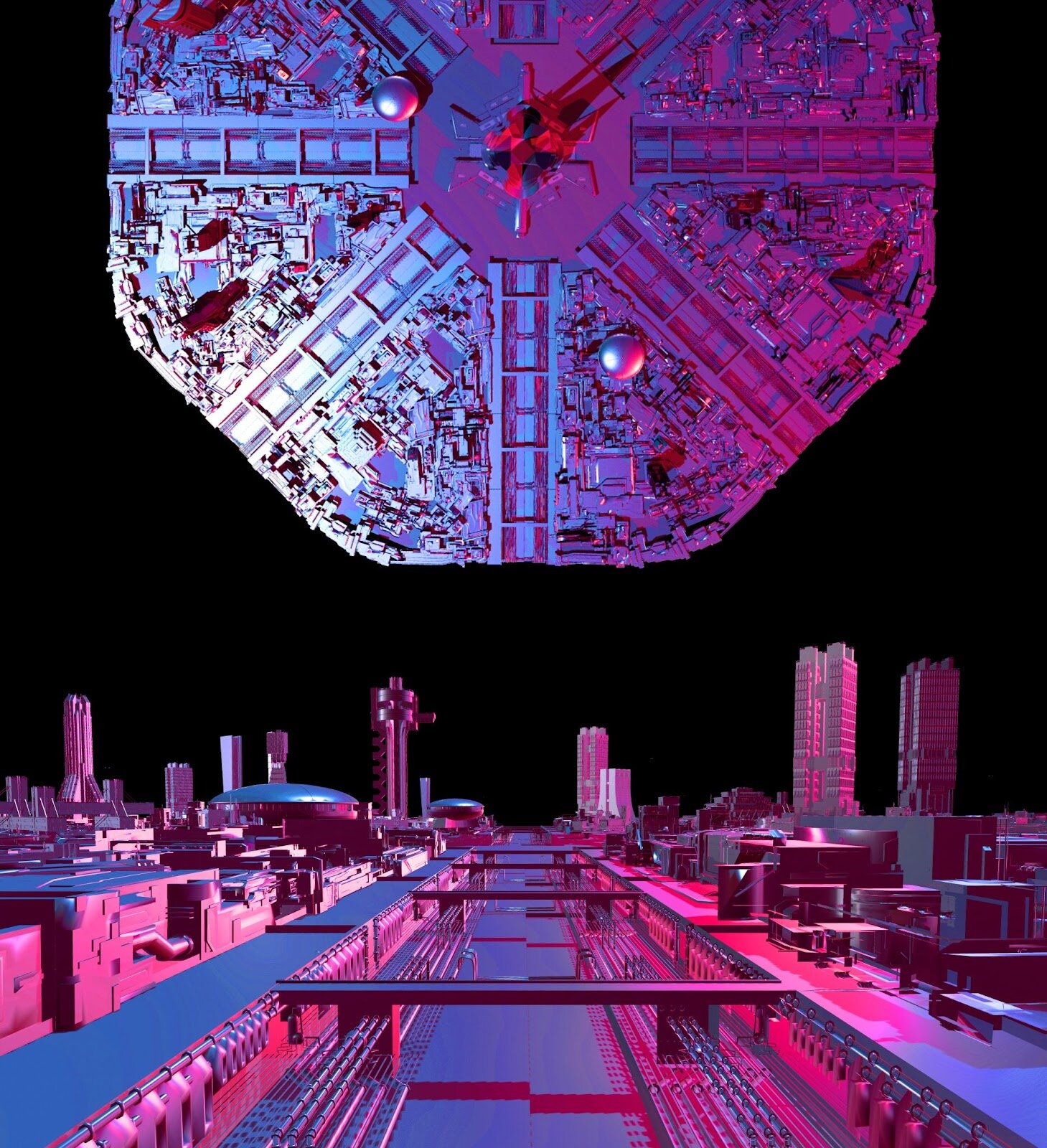
all images © Pico Velasquez, unless stated otherwise
interview with metaverse visionary, pico velasquez
designboom (DB): To begin with, can you explain to us what the Metaverse actually is?
Pico Velasquez (PV): The Metaverse can be defined as an extension of the internet with an infinite amount of interconnected spaces that are interoperable, decentralized, community-governed, operated, and owned. Visually and creatively speaking, the Metaverse is a set of 3D virtual environments close to what we see in multiplayer video games, social media, and augmented reality combined. It will consist of all data, visualized or not, through 2D, 3D, XD, XR, website platforms, or even purely code. And users will be able to access it through multiple hardware such as computers, smartphones, VR, and AR.
From an architecture perspective, the Metaverse lies in the intersection of technology and design for both physical and virtual environments. It will include worldbuilding, city planning, architectural structures, immersive experiences, gamification, marketplaces, and NFTs — where digital identities will interact in real-time.
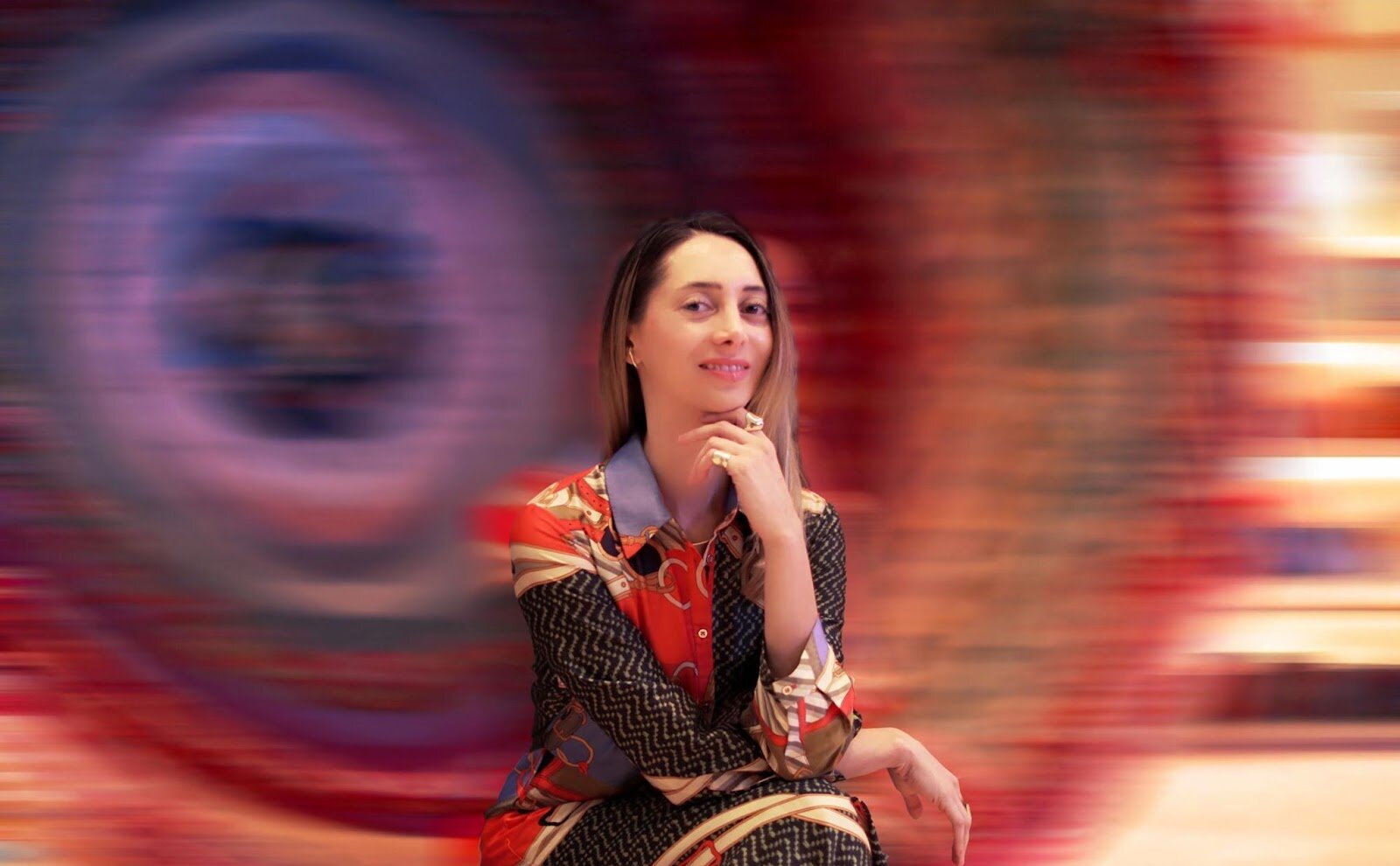
in conversation with Metaverse visionary Pico Velasquez at MetaWeek Dubai
DB: The Metaverse is still an enigmatic and exciting concept that is being built as we speak. What role will architects and designers play in its shaping? What new opportunities for creative expression has it brought about already?
PV: The Metaverse is a fascinating new opportunity for architects and designers alike, as it will transform every industry, including art, culture, education, entertainment, and all other aspects of our economy and daily lives. It is imperative to understand that the Metaverse has an incredibly complex set of layers; it is designing an entire parallel universe that seamlessly connects with our existing one. From cities and buildings to avatars and identities, in addition to ‘spaces,’ we will need to design how people and AI will communicate, trade, and interact.
Designing a Metaverse is also like creating a story. At the core, we know that people intrinsically want to connect globally. So, as Metaverse architects, we aim to devise new, innovative ways to unite people in engaging, human-centered experiences that are not just limited to looking at a building or space, which can provide real purpose and value. In addition to the almost-limitless creative possibilities in building immersive virtual worlds, the design of virtual spaces and interactions will define new aspects of social behaviors that could even lead to massive action and global impact. In this case, creativity and responsibility go hand in hand.
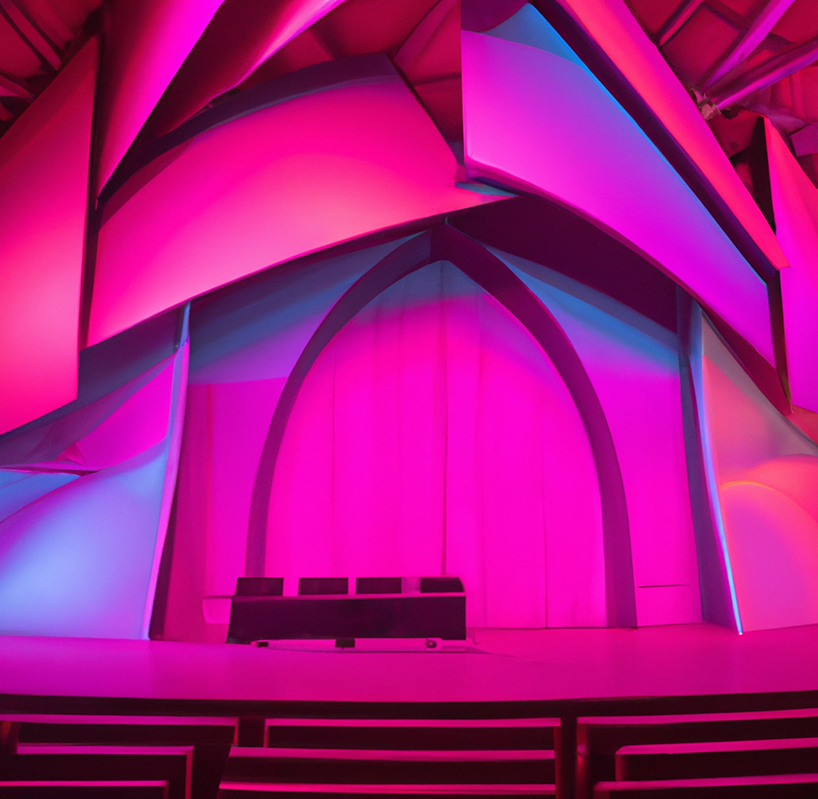
2D DALL·E outputs transformed into 3D virtual architecture
DB: As you mentioned in your MetaWeek keynote speech, you have now transitioned into the virtual realm after practicing as a traditional architect and designer for many years. Can you tell us a bit more about your latest venture — your Metaverse startup, VIIRA?
PV: With VIIRA, we are focused on playing a pivotal role in shaping the future by providing platforms and tools to build the Metaverse of tomorrow. Our initial approach is focused on Art and Culture, working with both traditional and digital-native individuals and institutions to develop their Web3 presence integrated with blockchain, NFTs, and DeFi.
We are in the process of building the first 3D-NFT marketplace focused on interactive and co-created art and design. We believe that the Metaverse, through its design and technology, will provide a new approach for artists and brands to express their work as well as connect with their fans and customers. Therefore, it is critical to provide a place that can build, showcase, and trade these new forms of expressions, including animations, interactive and generative art.
We are working with new and upcoming artists as well as prominent museums, grammy-winning artists, and luxury brands. And as part of educating a larger ecosystem, we serve as advisors for multiple Fortune 500 companies and startups on their Metaverse vision and strategy centered around innovation, community, and global impact.
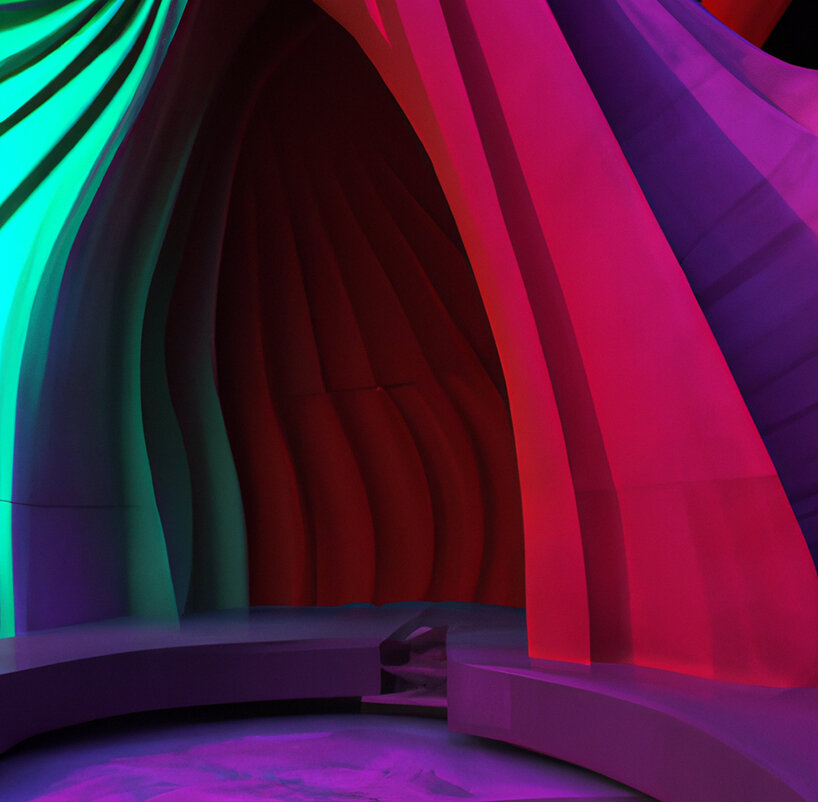
Sensory Experience Portals
DB: What factors and parameters differentiate how we build physical spaces compared to virtual ones?
PV: The determining factors for the physical spaces are the availability of land and materials to build and environmental requirements. In virtual realms, instead, our parameters are determined by our desired user experience, engagements, and use-case application. While buildings fulfill the most basic human needs like shelter and security, architecture impacts the emotional state of any person who interacts with it.
Architecture in the Metaverse is more than a static building. It is more like developing ‘live-architecture’ — combining spatial design, cinematography, animated digital content, storytelling, and guided experiences with gamification and interactivity. Here, for Metaverse architects, the simplest is to design virtual buildings and cities by mimicking what we know. Think digital doubles or game worlds, where spaces follow our own rules and physics.
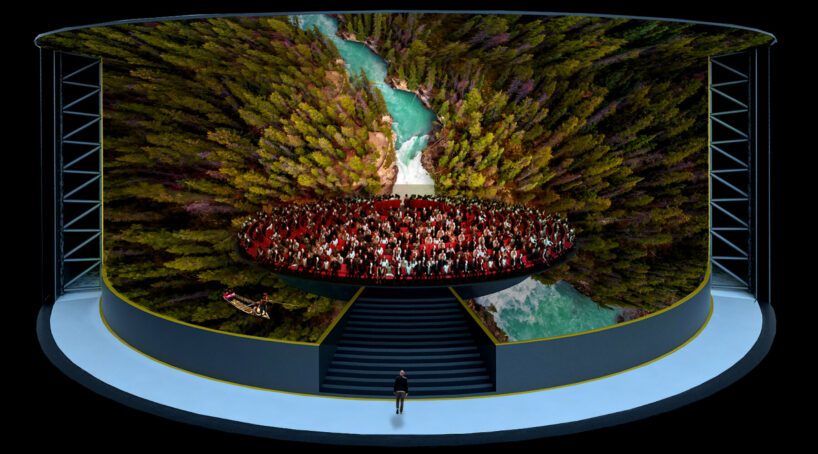
Ombiia: an immersive theatre experience
But then imagine, what aspects of our virtual spaces and buildings do not need to follow those pre-standing rules? For example, in a virtual setting, we can teleport instantaneously between spaces, and the virtual real-time renderings of our designed surroundings will adapt. Hence, without real-life rules or restrictions such as gravity, structural stability, climatic issues, or physical laws — unless programmed — architects have the freedom to overcome the existing conditions and create exceptional, constantly evolving environments and authentic experiences as art.
For example, imagine a gallery exhibition in a Metaverse space. Rather than replicating what exists in a physical version, it can be a 360 immersive exhibit where the user is not just witnessing or observing the artworks but also interacting and experiencing the entire exhibition. Multiple artworks can exist within a single space, which can be programmed to be unique for each individual and their in-space user behavior.
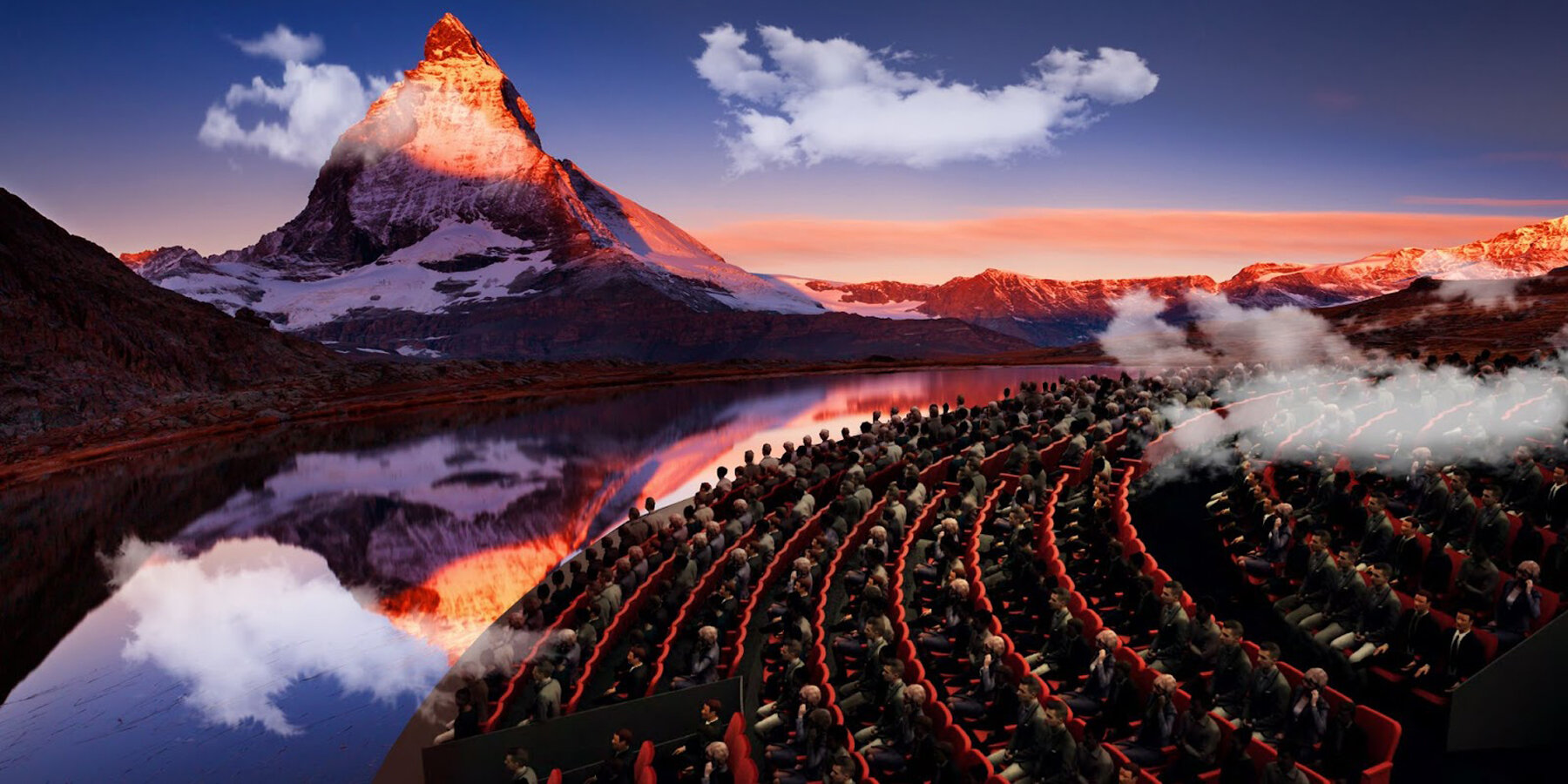
DB: How do real-world facets so integral to human experience, such as materiality and our senses, translate into the design of the Metaverse environment?
PV: Just like real-world architecture, human-centric digital architecture puts humans at the core of the design process and seeks to optimize positive interactions between people and buildings. This limits certain senses, so the atmosphere is delivered with these sources, and visual and audio effects are consequently more emphasized. The Metaverse human-centric approach is also based heavily on its elements of interactivity.

Sting | image © Rockwell Group and Pico Velasquez
DB: Lately, there has been a real surge in generative design. AI, AR, and VR are increasingly being used as visualization tools for both artworks and spatial environments. What role do these technologies play in shaping the Metaverse?
PV: Advances in AI, AR, and VR are already opening new opportunities for designers and are becoming essential in enabling the Metaverse to become an enthralling virtual experience, helping to create immersive and engaging 3D environments. VR allows users to experience fully immersive environments, both visually and acoustically through spatial sound. From an architectural perspective, this is not new, but from a dynamic storytelling and performance perspective, this is the first time we break from a 2D linear narrative.
Parametric and generative tools also offer an incredibly interesting, relatively new approach. They are becoming increasingly used in architecture to create data-informed, adaptive, and responsive designs. What is unique to the Metaverse is the real-time visualization of these spaces, where these data-informed transformations can be consistently modified at each given time.
Now add to this AI. We are already seeing the versatility and ease of creating artworks with applications like DALL·E and Wonder AI. Imagine this in a 3D context, and rather than the AI output being a static image, being a set of dynamic 3D objects, buildings, or worlds that can immediately adapt to your current inputs and interactions in real-time. That is the future.
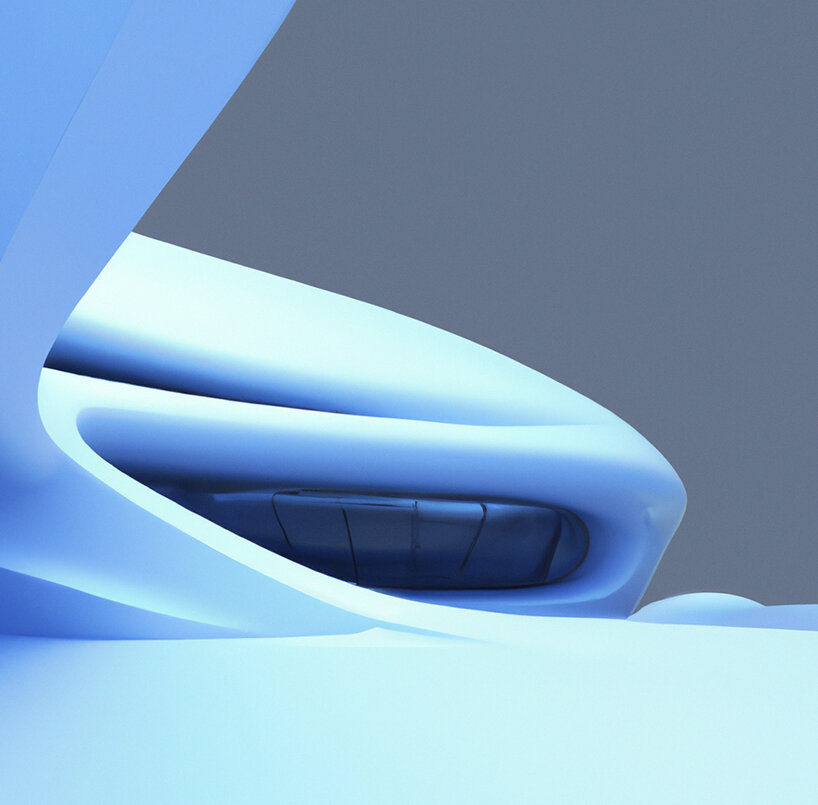
integrating AI technologies with dynamic 3D worldbuilding processes
DB: The closest, most familiar thing to the Metaverse that we have had in the past are video games. What can architects take away from the gaming industry to build the new virtual world?
PV: Yes, several popular games, such as Minecraft, Roblox, and Fortnite, are great precedents that can naturally transition into the Metaverse. They are multi-user virtual environments, immersive, with hundreds of millions of users, within a persistent real-time map. All of these games incorporate ‘metaversal’ elements, but what is missing is the decentralization of data, and the connection of your ‘in-game’ actions to the real world.
Architects building for the Metaverse may require new skills and a shift in perspective, considering elements of user interface and user experiences, such as gamification, character design, engagement, and retention. It will be a new age of architectural design.
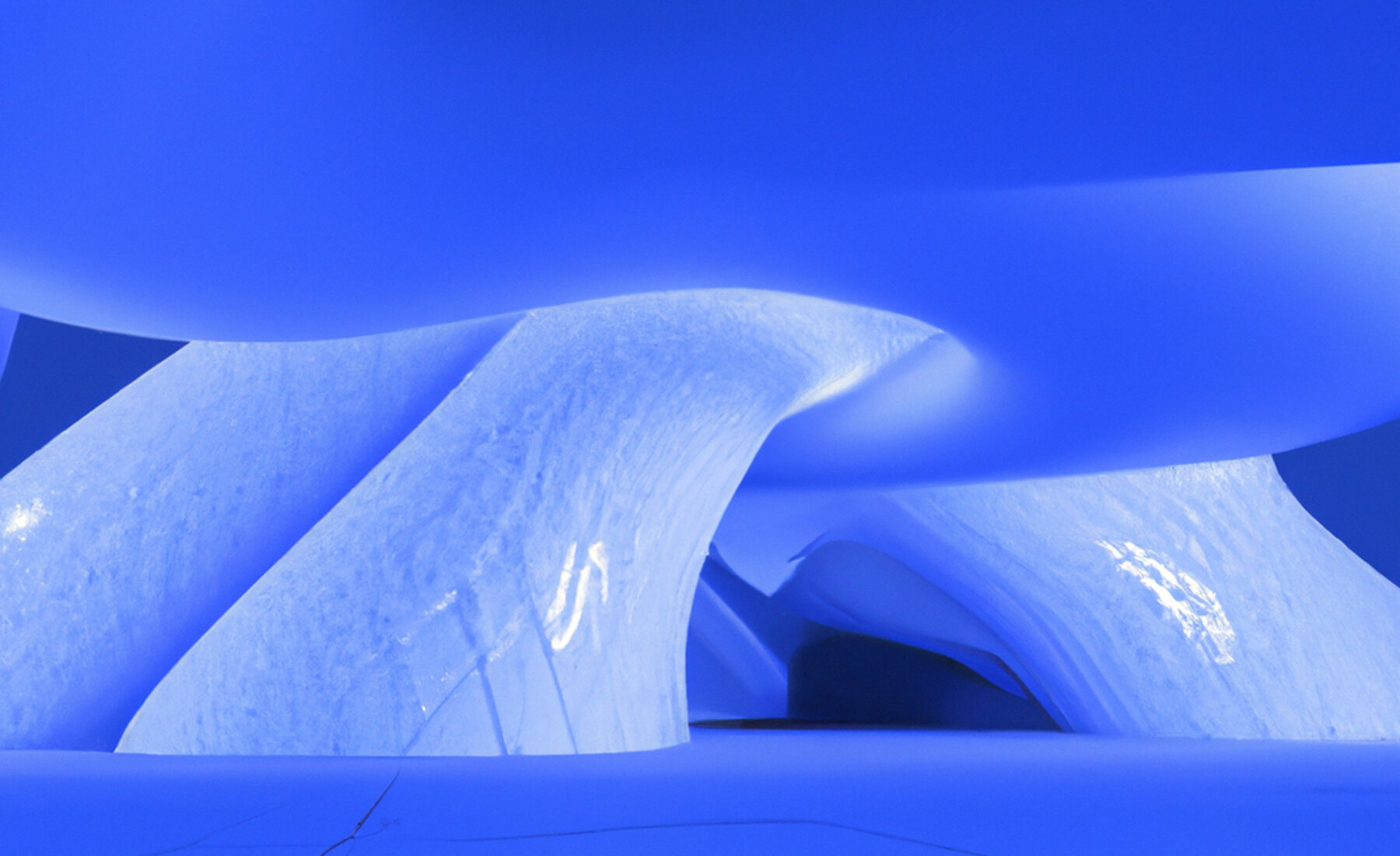
DB: Are there any current design trends that you think we should be particularly excited about?
PV: In my opinion, some companies to watch out for include existing brands like Nike, Gucci, LVMH, and Dior. And new crypto-native brands like Pet Liger, Le Fabricant, RTFKT, Vast Verse, I0ki verse, Bored Ape Yacht Club, and Metaverse Cool Cats. Then, there are architects like Daniel Arsham, who are developing virtual real estate, and Metaverse real estate development firm Everyrealm which has recently announced the launch of ‘The Row’, a private, members-only real estate community featuring architecture designed by world-renowned artists.
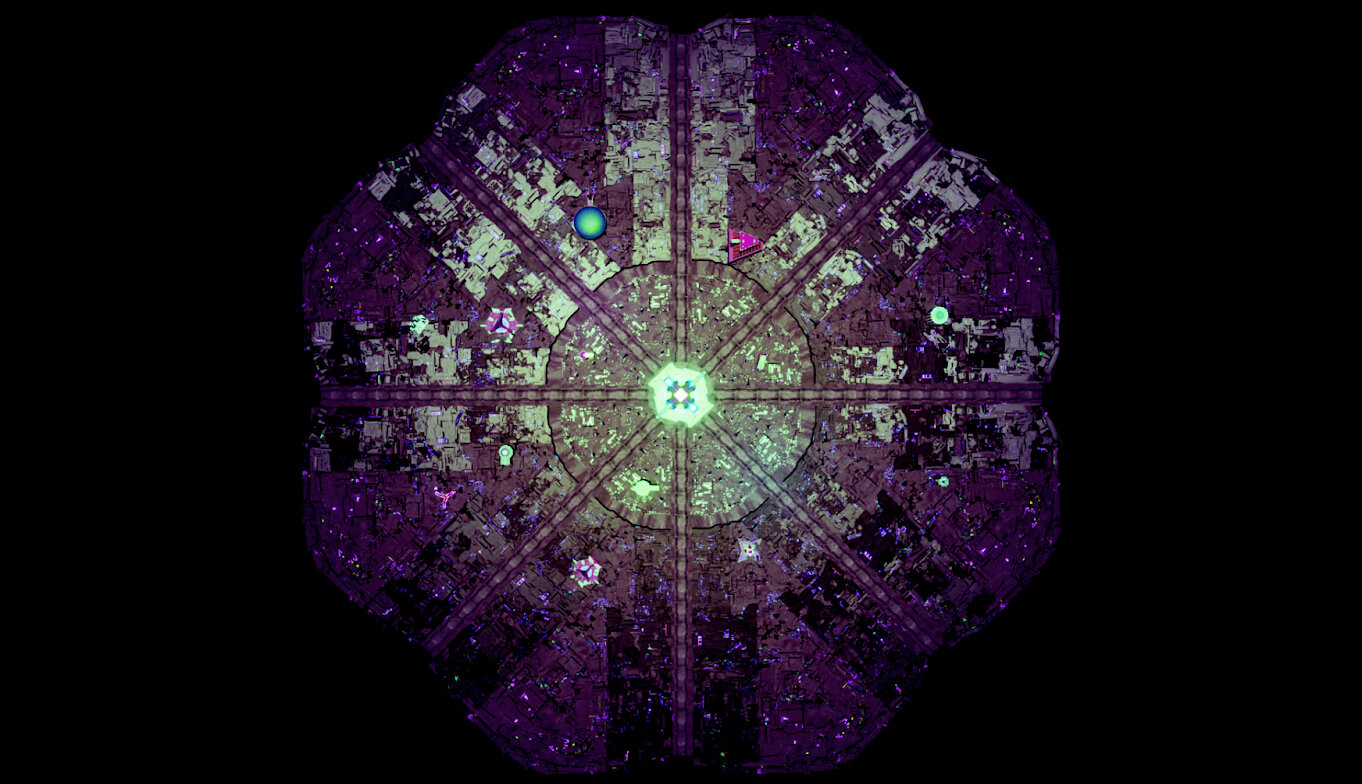
an industrial virtual city
DB: To end with, where do you see the future of Metaverse development going?
PV: Right now, the Metaverse is at a nascent stage, coming into presence from a couple of different directions. Social entertainment on decentralized platforms such as Decentraland, and more private user niche Metaverses like Wilder World, are increasingly attracting brands for their early Web3 marketing. On the other hand, there is the initiative for smart cities to enter the Metaverse, which we see primordially in advanced future cities coming from the Middle East and Asia.
In the next five years, all of these will begin to come together in a mix of digital twins for buildings and cities with more unique gamified experiences to immerse audiences. And eventually, all versions of Metaverse will get integrated as infinite versions of virtual environments, just as websites are to the internet, where the most predominant, valuable and user-friendly ones survive.
I will conclude by saying that we see the Metaverse as an opportunity to build a sustainable decentralized ecosystem that seamlessly merges our physical and virtual worlds. I also believe that a successful Metaverse will need to be highly inclusive, democratized, and focused on content rather than a virtual real estate, with the community at its core.
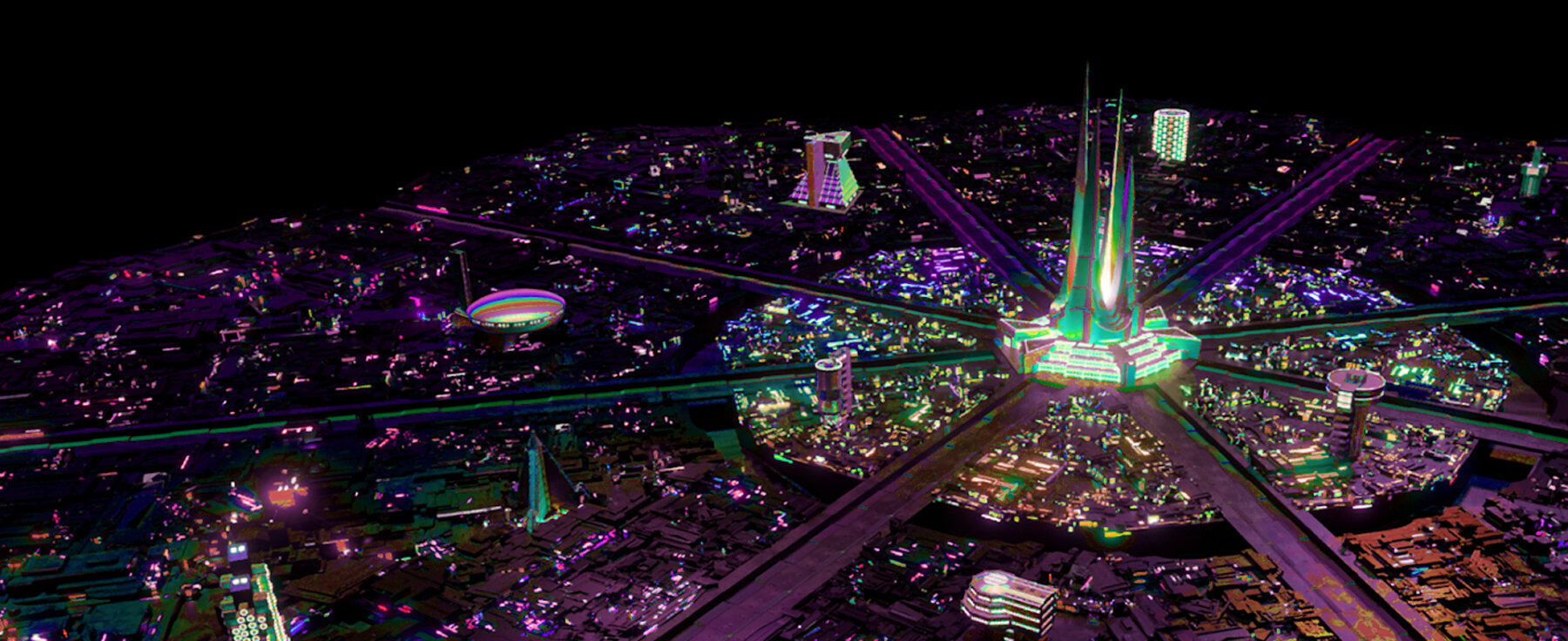
artificial intelligence (378)
metaverse (57)
metaweek dubai (3)
virtual and augmented reality (200)
PRODUCT LIBRARY
a diverse digital database that acts as a valuable guide in gaining insight and information about a product directly from the manufacturer, and serves as a rich reference point in developing a project or scheme.
